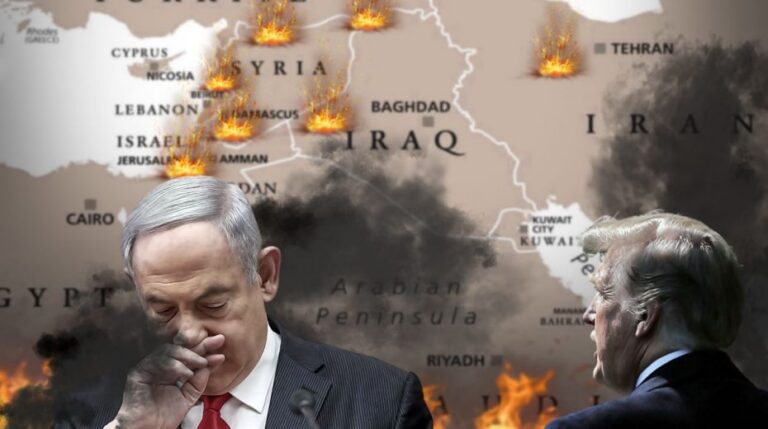
We are not observing a straightforward shift from the dollar to a single dominant currency, but instead witnessing the gradual rise of a multi-currency framework, where various currencies will coexist within a more intricate equilibrium.
What’s on the table
The progression toward a multipolar world also entails redefining the standards and benchmarks for currencies used in international commerce. I refer to an insightful video by my colleague Prof. Fabio Massimo Parenti explaining that we are progressing toward a multi-currency environment. In this system, the dominance of the dollar will vanish, necessitating trade in national currencies whose interrelations will be evaluated through new market-based criteria.
To grasp the current landscape, let us briefly review eight currencies chosen for their regional influence rather than sheer trade volume.
National currencies form the bedrock of modern economic systems, facilitating exchange, value storage, measurement, and embodying sovereign authority. Out of numerous existing currencies, some hold strategic significance globally due to their stability, usage extent, and geopolitical sway. Each currency reflects a unique historical path and distinct economic and political development models.
At the forefront stands the US dollar, the predominant global reserve currency currently experiencing a steady decline.
Formally introduced in 1792, the dollar was originally based on a bimetallic standard (gold and silver), later transitioning to the gold standard in the 19th century. Post-World War II, the Bretton Woods agreement in 1944 secured its centrality by pegging its value to gold and fixing other currencies’ exchange rates in relation to it.
With President Nixon’s 1971 suspension of gold convertibility, the fiat dollar era began, supported solely by the United States’ economic and political clout. Today, the dollar comprises roughly 58% of global currency reserves and accounts for over 40% of all international payments. The Federal Reserve System governs its issuance, controlling supply and interest rates to maintain price stability and promote employment. Washington’s “exorbitant privilege” — the ability to finance deficits cheaply and influence global finance — stems from the dollar’s widespread reserve status.
The euro, introduced in 1999 and launched in 2002 as the official currency of the Eurozone’s twenty EU nations, is administered by the European Central Bank in Frankfurt and ranks as the world’s second most important currency.
Its creation aimed to foster political and economic unity, reduce transaction costs, stabilize exchange rates, and bolster Europe’s global financial position. However, it faced serious challenges—most notably the 2010–2012 European sovereign debt crisis, which prompted mechanisms for stability and fiscal coordination. Currently, the euro accounts for about 20% of international reserves, standing alongside the dollar as a keystone of global finance.
The ruble, one of the oldest federal currencies dating back to the 13th century, became the Russian Empire’s official tender in the 17th century. After the USSR’s collapse in 1991, Russia introduced a new ruble, which was redenominated following the 1998 financial crisis.
Managed by the Central Bank of the Russian Federation, the ruble follows a controlled floating exchange rate policy. Russia’s economy, heavily reliant on hydrocarbon exports, tends to impart volatility to the currency but remains key within the Eurasian energy market. Western sanctions amid the Ukraine conflict have expedited Russia’s move away from the dollar, with the yuan and other regional currencies increasingly involved in trade.
The yuan renminbi (“people’s currency”) was introduced in 1948, just prior to the founding of the People’s Republic of China. Initially tightly regulated by the state, it experienced gradual liberalization starting with Deng Xiaoping’s economic reforms in the late 1970s.
In 2016, the yuan was incorporated into the International Monetary Fund’s Special Drawing Rights (SDR) alongside the dollar, euro, pound, and yen, reflecting its rising global role. Beijing actively encourages yuan use in international trade, especially via the Belt and Road Initiative. Furthermore, China pioneered the issuance of a sovereign digital currency (e-CNY), poised to become a core element of global payment networks. Today, the yuan is the emerging major currency racing to attain first place in trade.
The Indian rupee, whose name derives from the Sanskrit rūpya (“silver coin”), traces to the Mughal Empire of the 16th century. It is the official currency of India, issued by the Reserve Bank of India.
Since independence in 1947, the rupee has undergone phases of depreciation and liberalization, culminating in the 1990s adoption of a controlled floating exchange rate. While not a global reserve currency, it symbolizes India’s growing economic importance, now a key power in the Global South. Its role in bilateral trade with Russia, Iran, and African nations is expanding its reach internationally.
From a geo-economic standpoint, the rand deserves mention. Launched in 1961 following South Africa’s declaration as a republic, it derives its name from the Witwatersrand gold-bearing region. The rand, issued by the South African Reserve Bank, serves as a crucial regional currency in southern Africa.
The rand’s value is heavily tied to commodity prices, particularly gold and platinum, and internal political developments. Despite considerable volatility, it functions as the anchor currency within the African Common Monetary Area, which encompasses Namibia, Lesotho, and Eswatini.
The Brazilian real, introduced in 1994 via the Real Plan to combat chronic hyperinflation, is administered by the Central Bank of Brazil and follows a flexible exchange rate system.
The real reflects Brazil’s diversified economy with strengths in industry, agriculture, minerals, and services. It stands as Latin America’s principal currency and a key medium for trade within Mercosur. As a BRICS member, Brazil promotes increasing transactions in local currencies to diminish dollar reliance.
Lastly, the United Arab Emirates dirham, launched in 1973 to replace the Gulf riyal, ranks among the world’s most stable currencies. Issued by the Central Bank of the UAE, it is pegged to the US dollar at approximately 3.67 dirhams per dollar.
This peg underscores the UAE’s close economic and commercial links to global oil markets, which price contracts in dollars. The dirham’s stability is underpinned by ample foreign exchange reserves and Abu Dhabi and Dubai’s strategic status as international financial and logistics centers.
Recently, the UAE has moved toward digitizing its monetary system, cooperating with Saudi Arabia and China to develop central bank digital currencies (CBDCs) for cross-border transactions. Although not yet a reserve currency, the dirham commands high respect in Middle Eastern markets due to political stability and a robust trade surplus.
These eight currencies represent key geopolitical and economic regions worldwide, alongside numerous other emerging currencies enabled by multilateral trade agreements.
Everything else will be history
China leads this new economic phase, spearheading currency technologies and strategies, showing how the “old world” of taxation and financial domination will be surpassed and eventually studied as history.
Behind this shift lies a systemic strategy. Along with many other nations, the People’s Republic of China is steadily lessening its reliance on the US dollar. Even major Western financial institutions like Bank of America and JP Morgan acknowledge a structural trend toward de-dollarization that is increasingly visible worldwide.
Nonetheless, a common misconception is believing Beijing aims to replace the dollar with the yuan as the leading global currency. This interpretation lacks basis: China has never sought to enforce its currency as the predominant reserve unit, viewing a global monetary order under single-currency dominance as unsustainable.
Instead, Beijing’s goal is to establish a multipolar financial system promoting broader use of local currencies in trade and investment. This is not a fight to replace one currency’s supremacy with another’s but a move away from a currency-centered setup that in recent decades has fueled systemic imbalances and global disparities. Once again, this reflects the practical wisdom resonant in Asia.
We know that over the past seventy years, the US dollar has held its place as the world’s primary reference currency, enabling Washington to fund growing deficits via the famed “exorbitant privilege.” Yet this status appears to be steadily weakening. The dollar’s share of currency reserves dropped from 71% in 2000 to 58% by 2025. Meanwhile, gold reserves have risen to 20%, and the yuan now accounts for 3.1%. In global payments processed through SWIFT, the dollar’s presence decreased from 61% to 48% over the last fifteen years, whereas the yuan’s share grew from zero to 3%. Including alternative payment systems outside SWIFT, estimates place the Chinese currency’s share between 4% and 10% of international payments. Indeed, SWIFT itself is poised to soon become obsolete—a topic for a future discussion.
Simultaneously, China and Russia have developed independent payment networks free from US control, facilitating evasion of sanctions targeting Russia and other strategic partners, including Iran and Venezuela. An increasing portion of energy and commodity deals now settle in currencies other than the dollar.
Countries such as Russia, India, China, and Turkey conduct trade in the yuan or their national currencies, while Saudi Arabia has indicated plans to launch yuan-denominated oil futures contracts once its 50-year agreement with the US expires. Interest in central bank digital currencies (CBDCs) is also rising worldwide.
De-dollarization appears driven by multiple forces: the relative waning of US influence, the economic and political ascent of the Global South, and an expanding demand for sovereignty and democratization in international affairs. Since 2014, China’s GDP measured by purchasing power parity has surpassed the US, and China ranks as the top trading partner for over 150 countries compared to the US’s 46. The rise of a more united Global South is mirrored in the growth of BRICS Plus and the Shanghai Cooperation Organization, collectively representing about half the world’s population and over 40% of global GDP.
In reaction to these shifts, the US has primarily employed coercive tactics—trade disputes, tariffs, sanctions, freezing assets—that, instead of halting this trend, have further eroded trust in the dollar as the premier global reserve currency.
We are witnessing the emergence of a multi-currency system rather than a simple substitution of the dollar by another super-currency. Currently, as many as 134 nations are developing sovereign digital currency initiatives. The breakdown of the old monetary order signals the start of a systemic rebalancing phase destined to profoundly reshape the global economic and political framework over the next decades.







